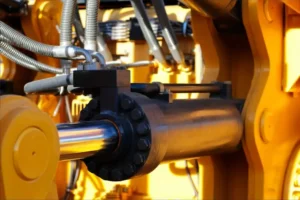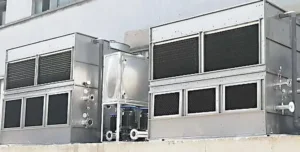ค้นพบวิธีการที่มีประสิทธิภาพในการวัดอุณหภูมิหลอมเหลวของโลหะอย่างแม่นยำด้วยคำแนะนำที่ครอบคลุมนี้. เรียนรู้เทคนิคที่ดีที่สุดสำหรับการกำหนดอุณหภูมิที่แม่นยำ, จากเทอร์โมคัปเปิลและไพโรเมทรีไปจนถึงการสแกนแคลอรี่ที่แตกต่างกัน. สำรวจโปรโตคอลความปลอดภัยและข้อควรพิจารณาที่สำคัญสำหรับการทดลองอุณหภูมิสูง. ไม่ว่าคุณจะเป็นนักโลหะวิทยา, นักวิจัย, หรือผู้ที่กระตือรือร้น, ปลดล็อกความลับในการควบคุมการวัดอุณหภูมิการหลอมโลหะสำหรับโครงการต่อไปของคุณ.

การวัดอุณหภูมิหลอมละลายของโลหะสามารถทำได้ด้วยวิธีการต่างๆ, ขึ้นอยู่กับอุปกรณ์และทรัพยากรที่มีอยู่. นี่คือเทคนิคทั่วไป:
- เทอร์โมคัปเปิล: เทอร์โมคับเปิลวัดอุณหภูมิโดยใช้แรงดันไฟฟ้าที่สร้างขึ้นที่ทางแยกของโลหะสองชนิดที่แตกต่างกัน. มักใช้สำหรับการวัดอุณหภูมิสูง. เพื่อวัดอุณหภูมิหลอมละลายของโลหะ, เทอร์โมคัปเปิลสามารถแทรกเข้าไปหรือใกล้กับโลหะที่ถูกทำให้ร้อนจนละลาย. อุณหภูมิที่เกิดการละลายนั้นสามารถอ่านได้จากเทอร์โมคัปเปิล.
- ไพโรเมตรี: Pyrometers เป็นเครื่องมือที่ใช้ในการวัดอุณหภูมิสูง, โดยทั่วไปโดยการตรวจจับปริมาณการแผ่รังสีความร้อนที่ปล่อยออกมาจากวัตถุ. สามารถชี้ไปที่โลหะได้ตามความร้อน, และอุณหภูมิที่เริ่มละลายสามารถสังเกตได้.
- แคลอรี่สแกนที่แตกต่างกัน (DSC): DSC เป็นเทคนิคที่ใช้ในการวัดความแตกต่างในการไหลของความร้อนเป็นตัวอย่างและวัสดุอ้างอิงเนื่องจากอยู่ภายใต้โปรแกรมอุณหภูมิควบคุม. อุณหภูมิหลอมละลายของโลหะสามารถกำหนดได้โดยการสังเกตจุดสูงสุดของความร้อนในเส้นโค้ง DSC, ซึ่งสอดคล้องกับพลังงานที่ดูดซับในระหว่างกระบวนการหลอมละลาย.
- วิธีการทางแสง: โลหะบางชนิดแสดงการเปลี่ยนแปลงลักษณะเฉพาะในคุณสมบัติทางแสงเมื่อพวกเขาเข้าใกล้จุดหลอมเหลวของพวกเขา. ตัวอย่างเช่น, การสะท้อนแสงของพวกเขาอาจเปลี่ยนแปลง. วิธีการทางแสงสามารถเกี่ยวข้องกับการสังเกตการเปลี่ยนแปลงเหล่านี้โดยใช้อุปกรณ์พิเศษหรือแม้กระทั่งการตรวจสอบด้วยภาพอย่างง่ายภายใต้เงื่อนไขการควบคุมแสง.
- เตาที่มีการควบคุมอุณหภูมิ: หากคุณสามารถเข้าถึงเตาที่มีการควบคุมอุณหภูมิที่แม่นยำ, คุณสามารถเพิ่มอุณหภูมิค่อยๆในขณะที่ตรวจสอบตัวอย่างโลหะ. เมื่อถึงจุดหลอมเหลว, สามารถบันทึกอุณหภูมิของเตาเผาได้.
- ไดอะแกรมเฟส: การปรึกษาหารือของไดอะแกรมเฟสที่เฉพาะเจาะจงกับโลหะที่ถูกทดสอบสามารถให้ข้อมูลที่มีค่าเกี่ยวกับอุณหภูมิการหลอมละลายภายใต้เงื่อนไขบางประการ. ไดอะแกรมเฟสมักจะแสดงความสัมพันธ์ระหว่างอุณหภูมิ, ความดัน, และเฟสของวัสดุ (แข็ง, ของเหลว, แก๊ส).
- เทคนิคการวิเคราะห์ความร้อน: เทคนิคต่าง ๆ เช่นการวิเคราะห์ความร้อนที่แตกต่างกัน (DTA) และการสแกนแคลอรี่สแกนที่แตกต่างกัน (DSC) สามารถใช้ในการศึกษาพฤติกรรมความร้อนของวัสดุ, รวมถึงการกำหนดอุณหภูมิหลอมละลาย.

เมื่อทำการทดลองที่เกี่ยวข้องกับอุณหภูมิสูงหรือโลหะละลาย, จัดลำดับความสำคัญความปลอดภัยเสมอโดยการสวมใส่อุปกรณ์ป้องกันส่วนบุคคลที่เหมาะสมและทำตามโปรโตคอลความปลอดภัยที่จัดตั้งขึ้น.







